Talare och sammanfattning av deras seminarier
Rickard Öberg
Jayway
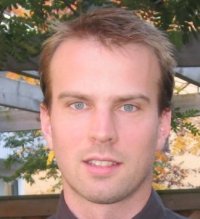
Jayway
Rickard has worked on several OpenSource projects that involve J2EE development, such as JBoss, XDoclet and WebWork. He has also been the principal architect of the SiteVision CMS/portal platform, where he used AOP as the foundation. Now he works for Jayway, and is interested in how to develop domain-oriented software that is well adapted for the new wave of Internet-centered applications.
Presentation: Qi4j workshop
Qi4j är en implementation av Composite Oriented Programming på Java-plattformen. I denna workshop kommer vi att gå igenom ett antal tutorials som visar hur en HelloWorld-applikation skriven i Java kan göras om för att använda de möjligheter som finns i Qi4j. Vi kommer att labba med Qi4j och diskutera de fördelar och nackdelar som finns med att använda COP jämfört med "vanlig" OOP.
Tom Stenström
Oracle
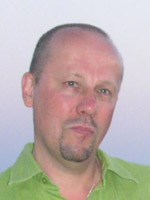
Oracle
Tom has a long experience of the IT industry working as a consultant, software developer, teacher, product-specialist, support technician and in various other roles. He has since the mid 80ies worked with a number of technologies and products as a developer, programmer, and architect. His interest has always been on new and emerging technologies and how they affect the way we look at systems and the way we develop them. Today that interest is mainly around BPM, SOA and the next generation of the Web and it's challanges and possibilities.
Presentation: Reflections on How to Bridge the Gap Between Business Needs and IT 
For a number of years we have spoken about the ”Gap” between Business and IT. Today we have a number of different approaches to bridging this gap both from a technology as well as architectural standpoint. Using Models of different types as a starting point and a possibility to build common ground is a powerful way of adressing this issue. This presentation looks at different approaches and how thay can be used to create systems more in line with the needs of the business
Kirk Pepperdine
Kodewerk Ltd
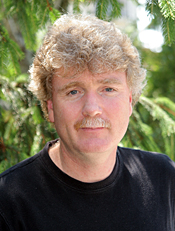
Kodewerk Ltd
Kirk's career began in Biochemical Engineering, where he applied his researching skills in attaching computers to sheep and cats, synthesising radio-active tylenol and developing separation techniques using High Performance Liquid Chromatography for Ottawa University and the National Research Council of Canada. Subsequently, he became employed by the Canadian Department of Defense. Kirk admits that his work at the DoD involved programming Cray supercomputers as well as other Unix systems, but he refuses or is unable to divulge the exact nature of the applications in the department other than that they involved databases and high performance systems.
Kirk is a principle consultant for Kodewerk where he has focused on performance tuning. Kirk has been involved with object technologies and performance for almost 20 years. In addition to being a co-author of ANT Developers Handbook, he contributes to www.javaperformancetuning.com and is an editor for TSS www.theserverside.com
Presentation: Concurrent and Performance Reloaded 
Last year I spoke about how changes in hardware are forcing us to think differently about the way to architect, design, and code systems. In this talk we will walk through advances in the JVM, the JDK that improve concurrency. We will also look at a style of programming that you can use to improve concurrency in your own code.
Presentation: Tune That!
In this tutorial we will walk through the steps required to tune an application. The tutorial will start with a short discussion on how to setup for the exercise. Then we will work though each step of the process. The direction of each step will be determined by an empirical measure. We will discuss which measures need to be taken when and how the measure should be interrupted. By the end of the exercise we should have demonstrated how to realize the least number of steps on the road to tuning your application.
Peter Norrhall
Movlin
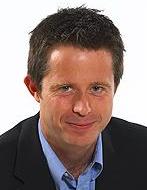
Movlin
Peter är en erfaren konsult och som jobbar som systemarkitekt, systemintegratör, teknisk projektledare och mentor. Peter har mer än 16 års erfarenhet ifrån IT inom industrin, ekonomi och finans och e-business/e-handels system. Peter har hållit ett flertal föredrag för Javautvecklare i Göteborg (Web Services, JavaServer Faces (JSF), Spring, Google Web Toolkit (GWT)).
Presentation: Dependency Injection Mönster 
I den här presentationen kommer Peter gå igenom olika Dependency Injection (DI) mönster och hur dessa är realiserade i olika open source och kommersiella IoC ramverk. Ramverk som kommer tas upp och indirekt jämföras är PicoContainer, Spring, Google Guice, Tapestry 5, Qi4J och ATG Dynamo, Presentationen kommer också ta upp andra aspekter som är viktiga att tänka på vid val av DI ramverk som t.ex. integration, AOP- och verktygsstöd samt hur OSGI kommer att påverka framöver.
Erik Hellman
SonyEricsson

SonyEricsson
Erik Hellman arbetar för närvarande SonyEricsson. Han har tidigare jobbat som systemarkitekt och utvecklare av telekomsystem på Ericsson AB i Karlskrona. Erik har tidigare gjort presentationer om 3D-utveckling i Java på Jfokus, JavaOne och JavaZone. Förutom att ha 3D-programmering som hobby så intresserar han sig för allt från stora distribuerade server-system till små applikationer för mobiltelefoner.
Presentation: Mobile 2.0, Bringing RIA to Java ME
Why is it so hard to create nice looking, feature-rich and user-friendly Java ME applications? For quite long, the development environment for Java ME has basically been fixed. Modern techniques such as unit-testing and continuous integration, usually taken for granted in the Java SE/EE, has been hard to setup at best and APIs and tools for building rich user interfaces have been virtually non-existent for most of the third-party developers.
But the future is looking much brighter. In this session, Erik Hellman and Velimir Karadzic from Sony Ericsson Mobile Communications will present the latest in development tools and UI frameworks for Java ME. With a brand new Java ME SDK and Flash-enabled user interfaces through Project Capuchin, rich mobile applications is no longer limited to high-end smart phones. This is Mobile 2.0 applications for the high volume market
Patrik Fredriksson
Citerus

Citerus
Patrik Fredriksson är av Eric Evans och Domain Language, Inc certifierad kursledare. Patrik är delägare i Citerus och arbetar som konsult inom mjukvaruutveckling. Han har arbetat med utveckling i Java sedan 1996 och finner en stor drivkraft i att arbeta för att få systemutvecklingsprojekt att bli effektivare, mer framgångsrika och roligare!
Presentation: Domain Driven Design, Demo applikationen
Under denna intensiva tutorial kommer vi tillsammans utforska hur en systemarkitektur baserat på mönster från Domain-Driven Design kan implementeras med moderna ramverk i Java för att bygga mjukvara för komplexa domäner. Tutorialen utgår från den demoapplikation som utvecklats tillsammans med Eric Evans, se http://dddsample.sf.net. Under tutorialen kommer vi varva presentationer med djupdykningar i kod och diskussioner.
Förkunskapskrav: Erfarenhet av Spring och Hibernate, eller motsvarande ramverk, t ex EJB3. Grundläggande kunskap om Domain-Driven Design och då främst de delar som rör implementation (Del 2, "The Building Blocks of a Model-Driven Design", i Erics bok).
Presentation: Domain Driven Design - DDDSample, en introduktion 
I denna presentation ger vi en introduktion till DDDSample, den demoapplikation som tagits fram tillsammans med Eric Evans för att visa hur en systemarkitektur baserat på mönster från Domain-Driven Design kan implementeras med aktuella och väl spridda ramverk i Java. Presentationen ger en introduktion till applikationen, dess bakgrund och syften, en introduktion till domänen och demonstrerar applikationen. Vi tittar även kort på de ramverk som används samt ger en snabb genomgång av systemets arkitektur. Målet är att besökare ska ges en bra grund att på egen hand kunna utforska applikationen och delta i vidare diskussion runt DDD och systemarkitektur.
Mike Keith
Oracle
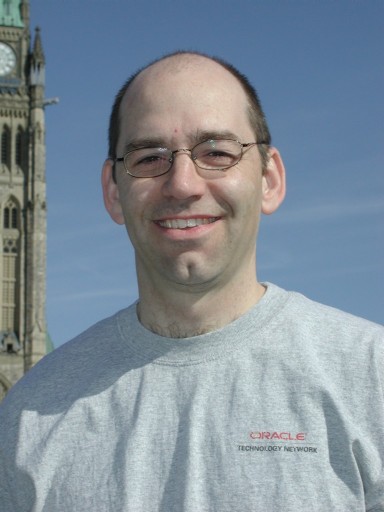
Oracle
Mike Keith has been a distributed systems and persistence expert for almost 20 years, and has a great deal of teaching, research and development experience in these and other areas. He co-lead the expert group that produced the first release of the Java Persistence API (JPA) and represents Oracle on numerous expert groups and specifications, including JSR 317 working on JPA 2.0. He co-authored the premier JPA reference book, Pro EJB 3: Java Persistence API, and has been involved with the Eclipse Persistence Services (EclipseLink) project since its inception. He currently works at Oracle as an architect for Java and persistence strategies and participates in the OSGi Enterprise Expert Group.
Presentation: What's New and Exciting in JPA 2.0 
The Java Persistence API (JPA) has taken the Java development world by storm and is now recognized as the enterprise standard for object-relational persistence. The masses have settled into using JPA as a means to persist Java objects to relational databases, but sometimes they require features that are either missing or not fully specified in the 1.0 release. JPA 2.0 is filling in the feature gap and introducing many of the additional features that developers have asked for. We will examine where the current standard stops and where the new 2.0 release continues on. We will discuss some of the tricks to using some of the new features and when it may be appropriate to use them. You will come away having learned such things as what the new query expression language will look like, how to specify and use advanced object-relational mappings and collections, and what new modelling capabilities will be available. This session will be suitable for anyone either using JPA or planning to use it at some point in the future.
Presentation: A Persistence Journey: From XML to the Database, and Back Again
Many people know about JPA, the standard for reading and writing Java objects to the database, and some people know about how JAXB can be used to map objects to XML, but did you know that you can use them together ? on the same object? The Eclipse Persistence Services Project is the next generation of persistence and the first open source project to offer a full suite of persistence technologies where all of the dominant persistence standards are implemented and accessible from a single source. The project, nicknamed EclipseLink, was created from the TopLink code base and is part of the Eclipse ecosystem of runtime technologies. It incorporates a set of individual runtime components, including JPA, JAXB, and SDO, that can be used separately or together in any runtime environment, including Java SE, Java EE, Spring and Tomcat. In this tutorial we will show how you can use standard APIs, like JPA and JAXB, to bridge the object, relational and XML worlds and take a single object from a web service, to the database, and back to another service. Attendees will learn how to use EclipseLink, the standard technologies it implements, and how these technologies can be used separately or together to meet advanced and diverse application requirements.
Ola Bini
ThoughtWorks

ThoughtWorks
Ola Bini är en svensk utvecklare som jobbar för ThoughtWorks i Stockholm. Han är en av huvudutvecklarna bakom JRuby, skapare av språket Ioke och författare av boken Practical JRuby on Rails. Han hyser ett stort intresse för programmeringsspråk och skriver för närvarande kolumnen Utvecklarfrågan i Computer Sweden.
Ola har talat på ett antal konferenser genom åren, såsom JavaOne, Javapolis, Jfokus, JAOO, QCon, TheServerSide Java Symposium, RailsConf och många fler.
Presentation: Javaplattformens framtid 

Hösten 2008 hölls en konferens vid namn JVM Language Summit på Sun's campus i Santa Clara. Vid denna konferens samlades några ovanliga Javautvecklare - nämligen de som skapar sina egna språk ovanpå JVMen. En stor anledning till att denna konferens hölls var att fler och fler språk har dykt upp för JVMen, såsom Clojure, JRuby, Jython, Groovy, Scala och många andra. Dessa språk ser också mer användande i industrin, och Sun har insett att Java är mycket mer än bara språket Java. JSR 292 är en JSR som syftar till att förbättra miljön för alternativa språk på JVMen. Exakt vilka delar av JSR 292 som kommer finnas i nästa version av Java är ännu inte klart, men det är säkert att vissa delar kommer vara där. Den här presentation kommer introducera JSR 292, prata en del om preblemen den löser, och vilka andra innovationer som kan bli en del av Java, såsom closures, tail calls, continuations, och mycket annat. Presentationen kommer också introducera DaVinci-maskinen där mycket av arbetet med framtiden för Javaplattformen utförs just nu.
Presentation: DSLs - what, why, how 
De senaste åren har DSL (domain specific languages) blivit ett allt vanligare ord, men vad är det egentligen? Ett antal personer på ThoughtWorks har de senaste åren funderat på hur vi kan använda språk för att förbättra utveckling av system inom vissa domänar och domänspecifika språk verkar vara ett sätt att hantera komplexa domäner som ger många fördelar. DSLer är inget nytt fenomen - de kallades inte DSLer, men Lispprogrammerare har länge använt sig av "små språk" när de byggt system. Men hur man använder dem korrekt i vår Javavärld är en annan historia. Den här presentationen kommer först prata om vad domänspecifika språk är och vad de inte är, och sedan spendera lite tid på varför de kan vara intressanta för programmerare. Större delen av presentationen kommer dock fokusera på hur du implementerar interna och externa DSLer i Java.
Staffan Nöteberg
Rekursiv AB
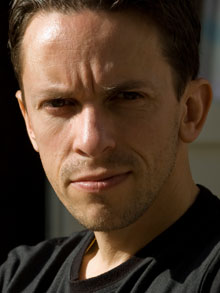
Rekursiv AB
Staffan Nöteberg has been a professional software developer since 1992. He focuses on computer science and software development processes. Most days he's working as a senior Java contractor, but now and then writes the BRAINMODA blog or teaches either Agile or Object Technology. Staffan has been practicing and teaching the Pomodoro Technique for some years now. This year he has given speeches about this exciting methodology at conferences like Agile2008 (Toronto).
More about Staffan Nöteberg: http://staffannoteberg.se
Presentation: Pomodoro Technique: Kan du fokusera - verkligen fokusera - i 25 minuter?
Pomodoro Technique är en agil metod på individnivå. Med tre enkla verktyg - papper, penna och en äggklocka - ger Pomodoro Technique dig frekvent feedback, ett iterativt arbetssätt, en adaptiv process och många andra agila fördelar. Och Pomodoro Technique passar utmärkt som komplement till Scrum och XP. Det här är en utökad version av det populära föredrag som jag har hållit på Agile2008, Öredev mm.
På Agile2008 i Toronto blev det framröstat bland de 15 (av 400) som fick köras en gång till den sista dagen.
Vem kan deltaga: Alla Du får lära dig: Använda hela eller valda delar av Pomodoro Technique i ditt dagliga arbete, Synliggöra hur du spenderar din arbetstid, Öka fokus och koncentration på det viktigaste, Bryta ner komplexa problem , Använda Mind Map för att överlära, Orientera dig i andra liknande metoder som GTD, Printable CEO, Power of 48 minutes och The Unschedule. Övningar blandat med teori
Jonas Bonér
Triental

Triental
Jonas Bonér spends most of his time developing large-scale financial systems as well as lecturing and speaking at developer conferences world-wide. He has worked at Terracotta, the JRockit JVM at BEA and is an active contributor to the Open Source community; most notably created the AspectWerkz Aspect-Oriented Programming (AOP) framework, committer to the Terracotta JVM clustering technology and been part of the Eclipse AspectJ team. He and his team at Triental AB has for the last year been using Scala successfully in a "real world" production setting while creating a product suite for portfolio and wealth management. Read more on his blog: http://jonasboner.com
Presentation: Pragmatic Real-World Scala 
Scala is a one of the most interesting new languages for the JVM. A unique and elegant blend of the Object-Oriented (OO) and Functional Programming (FP) paradigms yet pragmatic and practical with seamless interoperability with Java. Scala stands for 'SCAlable LAnguage' and is designed to scale with the needs and requirements of its users. It is statically typed but with good type erasure and style which gives it a dynamic feel similar to Ruby or Python, but with the performance and safety only a statically typed language can provide. This makes it great for a wide range of use-cases, from internal DSLs to large-scale enterprise applications or container code.
In this talk we will give you an introduction to Scala from a Java/JEE and real-world perspective. We will discuss a wide range of areas such as: How to make effective use of Scala's richer OO abstractions and type system, such as mixin composition, to create more flexible and reusable components and systems. How to take advantage of Scala's FP nature, such as closures, high-order functions, immutability, for more clean, safe, conceptually coherent and deterministic code. How to make concurrent programming and event-driven systems a walk in the park using Scala's Actors library.How to bring it all together and make Scala work in the real world; with problems like Web development, O/R Mapping, Dependency Injection (DI), AOP, Testing, High-Availability, Scale-Out
Adam Skogman
Jayway

Jayway
Adam works as a Scrum Mentor and Java EE Architect, starting new Agile projects and helping out projects in dire straits. He finds that to make Agile work, you need to work on process, technology and tools, because process alone will not make you Agile. Adam is often called upon to talk about Java technology - especially on testing and Java performance. Among his engagements are some open-source projects. Adam is the lead of the open-source project "DDSteps", a data-driven extension to JUnit which enables you to separate test data from test code. DDSteps has become popular with both large companies (such as SonyEricsson, IBM, Sprint and PayPal) and many smaller businesses for integrating all the tools you need for end-to-end function testing of websites. Adam is also involved in the Qi4J and Spring LDAP projects.
Presentation: Developer Practices for a Hyper-Productive Team
This presentation will dig into how to really make Scrum work. I'll share the developer practices that we cannot live without, and dish out the truth about what tools we use. And, what we did when Scrum met the real world (hint: fundamentalism doesn't work). No fluffy stuff, just experiences from real life. This presentation is for developers, tech leads and testers alike - because Agile only happens when you work together.
The teaser trailer: Our fully-featured agile Java and Testing Software stack - yes, it's open source. Agile architecture; how to evolve and manage product generations. Real-world test-driven development and continuous integration - possibly the single most important technology for reaching hyper-productivity. Building customer trust in the team. Creating an Agile, "can do" attitude in the team. Working with customers - and what you can do when the customer isn't working with you.
Being part of a team that becomes hyper-productive is something I hope everyone will experience, because it is truly wonderful
Johan Lindfors
Microsoft
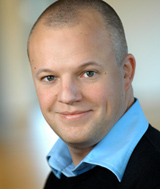
Microsoft
Johan Lindfors har jobbat på Microsoft i snart 10 år och under den tiden haft olika teknikfokuserade roller. För närvarande är han teknisk chef och ansvarar för en grupp tekniska evangelister som jobbar med att informera om och demonstrera Microsofts produkter och tekniker för utvecklare och IT-proffs. Johan studerade innan han började på Microsoft 1998 vid Högskolan Dalarna och var bland annat ordförande för Unix- och Linux-föreningen. Han bloggar också kontinuerligt på http://blogs.msdn.com/johanl/
Presentation: .Net Framework + Java = sant? 
Interoperabilitet mellan plattformar är en vardag för utvecklare av distribuerade system, men det finns en del fällor att ramla i om vi inte tänker oss för och samtidigt har en viss kompetens om båda plattformarna. Fokus under presentationen kommer att vara på just distribuerad kommunikation med hjälp av meddelandebaserade tjänster (exempelvis XML WebServices) men vi kommer också att titta på andra exempel där Java och .NET går hand i hand.
Jevgeni Kabanov
ZeroTurnaround

ZeroTurnaround
For the last five years, Jevgeni has been the R&D lead of Webmedia, Ltd, the largest custom software development company in the Baltics. During that time, he has spearheaded the movement to decrease the development turnaround time. As a result, two products (JavaRebel and JspWeaver) were developed under the trademark ZeroTurnaround, of which Jevgeni is the technical lead. Both projects contributed directly to the immense reduction in turnaround time. Jevgeni is also a co-founder of the open source Aranea project.
Presentation: Zero Turnaround in Java Development 
Turnaround is the time it takes for the changes in code to propagate to the running application. Currently the average time spent waiting for building and deployment is about one minute. In fact turnaround takes even more time away, due to the interruption penalties and quality degradation. In this talk Jevgeni Kabanov will review how to get the time from hitting Ctrl+S to refreshing the browser to less than one second. Using modern IDEs like Eclipse, NetBeans and IDEA and a toolset of tricks it is possible to almost eliminate the build from the turnaround. Using frameworks like OSGi or Tapestry 5 and code reloading solutions like JVM HotSwap and JavaRebel is is possible to also lose deployment out of the picture. After this talk you should be able to significantly reduce turnaround, whether you starting a project from scratch or maintaining an existing one.
Chris Hedgate
Blueplane
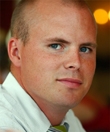
Blueplane
Chris Hedgate coaches software development teams to improve their development processes. Sometimes he works in a facilitating coach role to help organizations develop high-producing teams. Using techniques such as retrospectives he helps them improve team dynamics and collaboration. Other times his role is more of a player-coach. Similarly to player-coaches in sports, this means that he works as a part of the team while also mentoring the team members. In this role the focus is on creating quality software that can be used and modified over and over again. In the best of worlds, Chris works together with a colleague from Blueplane to fill both these roles and support eachother in giving maximum value to the client organization.
Presentation: From good to great developer 
Great developers know that writing code is a much smaller and easier task than understanding and modifying code is. Therefore, they make sure that the code they write is easy to understand, and possible to extend by writing new code rather than rewriting old code. This presentation shows how a great developer implements a new feature and improves existing code at the same time. I will describe how an attitude of making small improvements is a great first step towards becoming a great developer, and share some ideas on how to motivate good developers to take such an attitude.
Nils Eliasson
JRocket
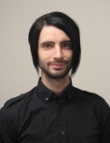
JRocket
Nils Eliasson is a member of the Oracle JRockit Engineering Team since 2006. He has been working with the compiler and the surrounding infrastructure with the goal of making Java perform even better. His day-to-day work involves everything from improving the compiler, trimming java libraries, and adding new performance optimizations. The JRockit product line contains of JRockit JVM - a high perfomance JVM for server application, JRockit Mission control - Zero overhead tools for monitoring, debugging and profiling the JRockit JVM, JRockit Real Time - A "soft real time" JVM that gives real time perfomance to standard Java applications and JRockit Virtual Edition - A minimal OS for virtualization environment designed for minimum overhead.
Presentation: Faster Java, the VM perspective 
The time when Java could be considered slow is long gone. The fierce competition in the JVM business has driven innovation and performance to spectacular heights. The JVMs are among the first being tuned for new hardware, unleashing performance for your old unmodified Java applications. This presentation gives you a quick look at what is going on behind the scenes - how the JVM transforms your Java code into machine code, and the tricks and techniques employed to squeeze the maximum performance out of it.
Björn Granvik
Jayway

Jayway
Björn Granvik has 18 years of experience as a programmer and architect. Born in Pascal, fostered in C/C++ and reborn in Java, he still believes that "code matters" - second only to people. The latter might explain his path as both project leader and manager.
He has worked with everything from gaming to enterprise systems and has a passion for sharing knowledge. The latter is evident from his list of lectures and articles - mostly on various technical subjects in Java and agile methods like Scrum.
A recurring speaker and expert panel facilitator, he can be found in everything from java user groups such as Javaforum Sweden to conferences like JAOO, Øredev and JavaOne.
Presentation: Scrum Shock Therapy 
Scrum consists of a straightforward process, half a bunch of roles and a few artifacts. Sounds simple, but 9 out of 10 projects that call themselves Scrum fail the so-called Nokia Test! This test is a set of straightforward questions designed to arrive at one response - Are We Scrum? Yes or No? To make matters worse, most of the mistakes are on the simple side of things. Scrum is fail-fast and self-organizing, a combination that makes for bad project starts. Both the team and management struggle to understand this new paradigm that does not readily fit their current set up. The Therapy: Get off to a good start by directing the team with a careful set of good practices and a strict agreement that leaves little or no choice. The team can then, over a couple of iterations, gradually take command themselves. Come hear about Scrum Shock Therapy. How does it work for companies like MySpace? Is this a faster, better way to get started with Scrum? It might be the sweetest hard deal around!
Jonas Jacobi
Kaazing

Kaazing
As co-founder of Kaazing Corporation, Jonas Jacobi oversees all aspects of Kaazing's operations and mission to become the world-wide leader in real-time Web infrastructure. Jonas has worked in the software industry for more than sixteen years in roles ranging from consulting to product management. Before founding Kaazing, Jonas worked as VP of Product Management responsible for the product management at Brane Corporation, a Silicon Valley startup. Prior to his appointment at Brane, he worked eight years at Oracle as a Java EE and open source evangelist, and product manager responsible for the product direction of JavaServer Faces, Oracle ADF Faces, and Oracle ADF Faces Rich Client in the Oracle JDeveloper team. Jonas is a frequent speaker at international conferences and has written numerous articles on emerging technologies. He is also co-author of the best-selling book - Pro JSF and Ajax: Building Rich Internet Components (Apress).
Presentation: The Future of Web Communication
There are several innovations within the HTML 5 specification that will forever change the direction of the Web, and one in particular - WebSocket - that will revolutionize the way we develop and deploy Web Applications. Until now, bi directional browser communication has been an elusive goal of the Comet community, usually achieved with an assortment of hacks. However, with recent updates to the HTML 5 specification, developers can now use a full-duplex communications channel that operates over a single socket.
The HTML 5 WebSocket enables communication from the browser to any TCP-based back-end service (for example, JMS, JMX, IMAP, Jabber, and so on). For example, it is now possible to avoid convoluted architectures by simply channeling certain protocols to the browser over HTTP and Web applications can now be deployed without the need for a traditional Web server.
The speaker will provide an in-depth look into the use of HTML 5 WebSocket and the techniques and technologies required to build Comet applications with it. Additionally, the speaker will discuss the trade-offs between emerging de jure standards (such as HTML 5's WebSocket) and de facto standards such as the Bayeux protocol. Furthermore, the session will cover the server and network architecture that powers an event-driven Web application. Attendees will be introduced to the technologies and requirements for delivering scalable, real-time Comet Web applications, and, most importantly, to the pitfalls they may face in the process.
Bring your laptop to this workshop if you want to get your hands a bit dirty.
Presentation: HTML 5 WebSockets: The Last Mile 
The HTML 5 specification is set to forever change the way in which we build applications for the Web. One innovation- WebSocket- in particular will enable full-duplex HTTP communication, and finally bring an end to the tired "click and wait" paradigm traditionally associated with the Web. Prior to the introduction of WebSockets, bi-directional browser communication has been an elusive beast. Attempts to address this gap in the Internet architecture has circled around server-initiated message deliver or "push" techniques, commonly known as Comet or ReverseAjax, and typically achieved with an astonishing assortment of browser hacks. But, the emerging standards outlined in the HTML 5 specification, developers can now take advantage of a full-duplex communications channel that operates over a single socket.
More specifically, WebSockets enable browsers to open a socket connection to any TCP-based back-end service (for example, JMS, JMX, IMAP, Jabber, and so on). Therefore, it is now possible to simplify the convoluted Java EE architectures of yore and build applications that communicate with native protocols over HTTP directly from the browser to any data-service. As a result, WebSockets bring the promise of finally migrating the desktop to the Web.
Vaclav Pech
JetBrains
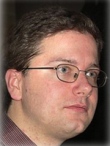
JetBrains
Vaclav is a programming enthusiast who develops with pleasure . With a masters' degree from Charles’ University in Prague and 10 years experience working as a software developer/consultant across Europe, he's keenly interested in server-side Java technologies, distributed and parallel systems, agile methodologies, modern programming languages, domain specific languages and of course IntelliJ IDEA and TeamCity. He currently lives in Prague, CZ and works for JetBrains as a senior software developer and a product evangelist. On the side, he's investigating the domains of neural networks, evolutionary programming and data mining. When not at work he spends his time with his family, hiking in the mountains or travelling.
Presentation: Groovy and a first step into DSLs 
Let's explore dynamic languages, meta-programming and Domain Specific Languages in a way that is natural to Java developers.
Groovy is a programming language that allows Java developers enter the sphere of dynamic languages and yet stay within the familiar boundaries of the Java world. In this talk we'll make our first small step out of the Java comfort zone and look around for what dynamic languages can offer. Using hands-on coding examples we'll cover some of the powerful syntax enhancements that Groovy adds to Java, illustrate the principles of meta-programming, use builders to ease Swing UI development and create handy DSLs to speed-up our coding. The session aims to provide you with the necessary initial background information to start Groovy programming and to tune your mind towards the new horizons.
Jim Webber
ThoughtWorks

ThoughtWorks
Dr. Jim Webber is director of professional services for ThoughtWorks where he works on dependable distributed systems architecture for clients worldwide. Jim was formerly a senior researcher with the UK E-Science programme where he developed strategies for aligning Grid computing with Web Services practices and architectural patterns for dependable Service-Oriented computing and has extensive Web and Web Services architecture and development experience. As an architect with Hewlett-Packard, and later Arjuna Technologies, Jim was the lead developer on the industry's first Web Services Transaction solution. Jim is an active speaker and is invited to speak regularly at conferences across the globe. He is an active author and in addition to "Developing Enterprise Web Services - An Architect's Guide" he is working on a new book on Web-based integration. Jim holds a B.Sc. in Computing Science and Ph.D. in Parallel Computing both from the University of Newcastle upon Tyne
Presentation: Guerilla SOA Campaign 
SOA is too often an excuse for CIOs and enterprise architects to indulge in enterprise technology to supposedly create the right platform for successful SOA delivery. On the back of their large installed bases, vendors pimp hundreds of SOA products to help those customers deploy and manage their attempts to develop Service Oriented Architectures. Ideally each of these parties would like to see business made successful through a protracted campaign of plumbing together advanced middleware with commodity engineers - to engage like British generals in the business of IT trench warfare.
This is plain wrong. Good SOA drives business value early, by delivering functionality early and incrementally rather than waiting for the "strategic platform to be complete." Good SOA drives out the strategic platform incrementally and suppresses risk. Good SOA is architected according to business capabilities, not by middleware sales. Good SOA is not trench warfare, but a coordinated set of skirmishes that, battle by battle, leads to victory.
In this talk Jim will review the case for Guerrilla SOA, and show how business capabilities form the basis for a lightweight process that enables rapid service discovery which in turn gets services delivered by poly-skilled teams of engineers and into the hands of actual users promptly. We'll also cover the long-term view of a service ecosystem and explore how, once delivered, services evolve to yield sustainable provision of service over the long haul.
Thomas Almnes
CIBER

CIBER
Thomas is a pragmatic developer with ten years of experience from both Java/JEE and .Net. During the time he as grown an appetite for steadily looking for more efficient and fun ways of programming and working in projects. Currently Thomas works in development projects for one of Norways largest banks, where one of the key focuses has been implementing agile processes.
Presentation: Stealth Scrum: Being agile in waterfall organizations 

Agile methods contrast traditional project methologies on more that one level. The popularity for agile methods among developers have shown an enormous growth the last couple of years, and eager souls have ran out of classes and conferences impatient to implement the principles in their projects - with various degree of luck. A lot of these projects are at customers who are not likely to welcome such change. Without loosing faith in the newly prodical, experience show that succeeding in applying agile principles demands quite a bit of understanding of the customer's work routine, combined with maturity and agility.. This session will focus on experiences in applying agile techniques and processes at three different Norwegian customers. Two of which was a success and one that wasn´t. Why? With all the techniques, where do you start first? What can you do when you are only allowed to use a linear waterfall process? And many more questions you may wonder about.
Cameron Purdy
Oracle
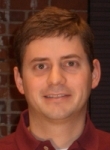
Oracle
Cameron Purdy is Vice President of Development at Oracle. Prior to joining Oracle, Mr. Purdy was the CEO of Tangosol, whose revolutionary Coherence Data Grid product provides reliable and scalable data management across the enterprise. Mr. Purdy has over ten years of experience with Javaô and Java-related technology. As a software visionary and industry leader, Mr. Purdy is a frequent presenter at industry conferences and has received a number of awards in recognition of his contribution to the Java community, including twice being named as a JavaOne RockStar and being recognized in TheServerSideís ìWhoís Who in Enterprise Javaî. He regularly participates in industry standards development and is a specification lead for the Java Community Process.
Presentation: Introduction to Data Grids 
Grid-based infrastructures are being developed, deployed and used to achieve unlimited application scalability and continuous availability across multiple datacenters. Understanding the additional capabilities of these infrastructures and how they can be improved with the use of data grid technology to solve increasingly difficult and complex problems ensures that your organization is getting the maximum utility from grid computing. This presentation focuses on how a data grid can easily help you achieve all of these goals and more.
This talk will address the following:
-How data grid capabilities function, such as coherent in-memory caching, dynamic data partitioning, and parallel query and process execution.
-How data grid capabilities solve complex computing problems and examples of how organizations are leveraging this on a global scale.
-How easy it is to deploy some data grids, which is generally operational within hours.
-How a data grid can be fully configurable, providing total flexibility to change caching topology without code changes.
Corneliu Vasile Creanga
Adobe
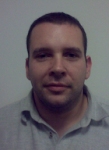
Adobe
Corneliu Vasile Creanga has been a Java Technical Lead with Adobe since August 2007. He graduated with a Computer Science degree in 2001 in Bucharest. He previously worked for Oracle as a software developer and business analyst and before that, in several small to mid-size software companies. His expertise is mostly related to databases, O/RM frameworks, Java/Java EE, and implementing domain models. Corneliu is known for his inner drive to do things better and his enjoyment of technical debates.
Presentation: Synchronization and Offline capabilities for Rich Internet Applications 
Flex, Silverlight, JavaFX - a new type of web applications started to gain momentum. Denoted Rich Internet Applications they brought us the power of desktop applications in the browser. Not only the user experience was improved but also new functionalities were added such as collaboration and the ability to work offline. This session will present the Adobe solutions for these problems (through Flex framework and LiveCycle Data Services product) and it will also present several alternatives from the market. Features like conflict management, data synchronization and offline functionality will be explained, together with integration with Java backends.
Jim Weaver
Veriana Networks
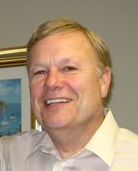
Veriana Networks
James L. (Jim) Weaver is the Senior VP of Technology at Veriana Networks, Inc. and is a world-reknowned "JavaFXpert". He writes books, speaks for groups and conferences, and provides training and consulting services on the subjects of Java and JavaFX. His latest book is entitled "JavaFX Script: Dynamic Java Scripting for Rich Internet/Client-Side Applications", and he is currently writing a book based upon the JavaFX SDK 1.0 release. He also posts regularly to his blog at http://JavaFXpert.com whose stated purpose is to help the reader learn JavaFX Script and other JavaFX technologies. Veriana Networks, Inc. is a management company dedicated to the development of next generation media through media creation, technology, risk management, and distribution. The global headquarters of Veriana is located in Marion, Indiana with offices in Chicago and San Diego.
Presentation: Developing Rich Internet Applications with JavaFX SDK 1.0
At last, the JavaFX SDK v1.0 was released in December, 2008. It's time for developers to use it to create great looking Rich Internet Applications (RIAs). This session, targeted at Java developers, will get you up to speed on using JavaFX to create the client-side of RIAs, often leveraging the power of Java in the application. Topics covered include:
-Obtaining the JavaFX SDK
-Using Declarative syntax to easily express JavaFX user interfaces (UI).
-Creating JavaFX classes that articulate the "model" in a JavaFX UI.
-Using binding and triggers to make the declaratively expressed UI leverage the model.
-Understanding the packages and classes available in the JavaFX SDK API
-Learning the JavaFX language constructs and syntax
-Developing a graphical node-centric UI
-Drawing shapes and text
-Using transforms such as scale and rotate to manipulate graphical nodes
-Handling mouse and keyboard events
-Animating a JavaFX program, including animated transitions.
-Displaying images
-Playing media
-Leveraging the power of Java from JavaFX by instantiating and using Java classes.
-Communicating with servers via HTTP, JSON and XML
Questions are encouraged during the presentation. To get the most out of the presentation, it is encouraged to visit javafx.com, download the JavaFX SDK, look at the videos and samples on the site, and play with JavaFX. Also, reading/subscribing to the "Helping You Become a JavaFXpert" blog at JavaFXpert.com will be helpful as well.
Magnus Kastberg
Nasdaq OMX

Nasdaq OMX
Magnus Kastberg is a Java architect at Nasdaq OMX. He has more than 12 years of experience building Java/JEE based systems. Prior to joining Nasdaq OMX, Magnus worked seven years for Sun Microsystems as a Java developer and architect, and two years for Ciber. Currently Magnus works in projects architecting and developing financial, business-critical Java EE based systems. The projects were early adopters of technologies like EJB3, JPA and JSF.
Presentation: Discover the Power and Elegance of WebBeans 
Web Beans provides a new set of services to Java EE components simplifying the programming model especially for web-based Java EE applications. Web Beans provides an advanced, typesafe dependency injection mechanism that makes it possible to integrate the Java EE web tier with Java EE enterprise services in an easy way. EJB 3.0 significantly enhanced and simplified the EJB programming model. But EJB components are not aware of web-tier contexts and cannot access state associated with those contexts. JSF is a web-tier presentation framework that lacks integrated transaction handling and other services like declarative security, etc. Web Beans solves these problems. For example, by using Web Beans, it's possible for EJB components to be used as JSF managed beans, allowing direct usage of EJBs in JSF pages. This presentation will explain why Web Beans are needed, what a Web Bean is and how to use them. Different attributes of web beans, like scope, binding type and deployment type, will be mentioned, and how these are used to achieve the loose coupling with strong typing characteristics. Some code examples will also be provided to illustrate different concepts.
Magnus Robertsson
Jayway

Jayway
Magnus is a senior enterprise application architect that has worked with Java professionally since it first hit the market. He is an experienced developer with a flair for solving complex design issues and believes that code can be beautiful (although most isn't). He put a lot of interest in technologies that simplifies the design of applications and makes the life easier for developers. Magnus is the lead of the open-source project AspectME that brought AOP to the mobile world. Under the faith that knowledge should be shared he often give presentations about experiences and insights he gets from his work.
Presentation: Controlling Your Architecture 
Agile architectures is a key ingredient to create systems that will last over a long period of time, but how do we achieve them? Do we need super-talented developers, agile processes or the latest technology? Regardless of the answer it's important to have control so we don't end up with a "big-ball-of-mud". This presentation will show you how to control your architecture with common tools and some clever code to create solid and help you achieve long lasting systems.
Hardy Ferentschik
RedHat

RedHat
As part of the Hibernate team Hardy is resposible for enhancing and maintaining Hibernate Search
Presentation: Hibernate Search 
Hibernate Search builds on Hibernate Core and builds a bridge between the object world of JPA/Hibernate and the fullext search world represented by Lucene. The presentation introduces the domain of fulltext search and shows the differences between fulltext search and simple SQL searches. It also highlights the mismatches a Java developer faces when trying to combine the OO world with a fulltext search world and how Hibernate Search has decided to solve these. More information about Hibernate Search can be found at: http://search.hibernate.org
Robert Folkesson
Microsoft

Microsoft
Robert Folkesson har arbetat med Internet-relaterad utveckling i över 12 år. Han arbetade länge som konsult med starkt fokus på Microsoft-relaterade tekniker och plattformar. Sedan två år tillbaka har Robert rollen som utvecklarevangelist på Microsoft med inriktning på nya gränssnittstekniker och webbaserade plattformar.
Presentation: Utveckla RIA med Silverlight
Silverlight är Microsofts teknik för att bygga rika webbaserade klienter som kombinerar stöd för media, vektorgrafik och animationer med ett omfattande kontrollbibliotek samt en version av .NET-ramverket anpassat för att exekveras i en webbläsare. I den här Lightning talk-sessionen ger Robert Folkesson, utvecklarevangelist på Microsoft, en introduktion till Silverlight och vilka möjligheter plattformen erbjuder.
Tomas Trolltoft, Ola Berg
IBS JavaSolutions
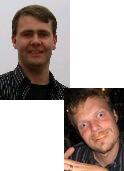
IBS JavaSolutions
Tomas Trolltoft har efter avslutade studier i datavetenskap 1995 konsultat som passionerad javautvecklare, främst inom telekomindustrin.
Han har varit med att utveckla otaliga system med höga krav på prestanda och flexibilitet och har ofta haft rollen som systemarkitekt.
Tomas är även en av de drivande personerna bakom Javaforum i Göteborg och har hållit flera presentationer och utbildningar inom systemutveckling. Bloggar på http://jsolutions.se.
Ola Berg är hobbyprogrammerare sedan barnsben och professionell systemutvecklare sedan tio år, med java som den viktigaste ingrediensen i livsluftblandningen. Han har ett större fokus på människor än mojänger, och är mer intresserad av att teknik får folk att blomma än tvärtom. På sistone har detta resulterat i ett starkt intresse för lustfyllda användarupplevelser, lättrörliga utvecklingsmetoder, och god mjukvaruekonomi.
Presentation: Meet Puke! 
Doing It Right (TM) has become the cancer of software industry. Programmers, drowning in articles and seminars on how to complicate matters, defend themselves against fear-driven management and snotty co-workers by rigid adherence to every one and all of the so called rules of perfect design and architectural awareness that floats around in our community. (And we all know that because 19 out of 24 patterns in any decent book about patterns are about inserting another layer of indirection, all of today's systems contain exactly 19 layers of indirection!) But fear no more, we say! Meet Puke, the street-wise coding cousin of good ol' Duke. She doesn't care what the others think. Instead, she knows that beautiful code is code that works for the customer, and that there is no orthodox way to that working code, only ways that cost more and ways that cost less. Some say Puke is a threat to quality. But she is no threat, she is here to help. In this session you will learn from Puke when NOT to apply a pattern; you will learn the secrets of combining good design and clean code with quick delivery; and the secrets of making shortcuts during development without standing with a huge design debt at the end. We will even give you a glimpse of the black arts (a. k. a. "software economics")! You will learn to appreciate the beauty of the ugly hack, and learn why the ones who feed you love it!
Martin Erlandsson
IBS JavaSolutions

IBS JavaSolutions
Martin Erlandsson
Presentation: Bortom JUnit: Automattesta allt! 
Bagarns barn får brända bullar! På samma sätt är vi systemutvecklare ofta väldigt dåliga på att använda IT för att effektivisera vår egen verksamhet! Vi börjar så smått att lära oss att skriva automatiska tester som testar att den kod vi skriver gör vad som förväntas av den. Men i våra projekt finns det så mycket andra krav på koden än bara de funktionella, och dessa går också utmärkt att skapa sviter av automatiska (och oändligt repeterbara) tester för! Några exempel: -Kod som pratar med databasen får inte samtidigt prata med GUI:t! -Du skall inte Cut-n-Paste-programmera! -Du skall inte skriva för komplex kod! -Du skall inte skriva för långa metoder! -Ett enhetsttest får inte använda sig av nätverket! -Du skall inte jämföra strängar med '==' ! -osv, osv. Att konsekvent tänka "Hur testar jag det?" när man får ett nytt sådant krav på sig kräver ett visst "mindset", men om man tillämpar det konsekvent så kan man lyfta kvaliteten på det man levererar till helt nya nivåer! Jag tänkte fokusera på själva "mindsettet" och varva med många praktiska exempel på hur man automattestar ovanstående påståenden.
Pär Sikö, Martin Gunnarsson
Epsilon

Epsilon
Pär Sikö är en passionerad Javautvecklare som envist håller sig på klientsidan men som vid ett fåtal tillfällen lockats över till serversidan, dock utan något lyckat resultat. Pärs ledord är "Gränssnitt ska vara snygga och inget ska lämnas åt slumpen" samt "En applikation som inte är tilltalande är samma sak som en icke fungerande applikation". Trots ett uttalat grafikfokus saknar Pär helt talang för form, färg och layout och ses därför sällan utan en kompanjon som behärskar grafisk design. Pär har jobbat som Javakonsult i många år och på senare tid har mer och mer av fritiden gått åt för att utveckla feedjii, en feedläsare skriven i Java och Swing.
Bra programmerare är ofta värdelösa designers (och tvärt om), men Martin Gunnarsson har en fot i varje läger och trivs bra med det. GUI-programmering och gränssnittsdesign passar honom synnerligen väl eftersom de är en härlig kombination av grafik och kod. Martin är en sann perfektionist, och blir sällan helt nöjd med sitt arbete, åtminstone inte någon längre tid. Kvalitet och genomtänkt design gör honom glad, medan fula applikationer och webbsidor har precis motsatt effekt. Martin har tillsammans med den tekniskt vassare kollegan Pär Sikö utvecklat feedläsaren Feedjii, som en plattform att testa nya GUI-idéer på.
Presentation: Swing Rocks 
Abstract Have you ever marveled about the looks of an iPhone’s graphical interface and all the really cool features, like scrolling, that is part of the phone? Have you ever looked at a beautifully animated web page and said: “That’s just got to be a flash.”? Why is that? In this presentation we will show you the power of Java graphics like you never seen it before. No more, ugly looking, user interfaces. Forget the JButton and the JLabel, we are going to create animated, stunningly beautiful interfaces. We will teach you how to create the “iPhone” scrolling, how to create fade in and fade out components, how to create the blur effect to focus, that been introduced in Vista.
Anders Hammar
Devoteam Quaint

Devoteam Quaint
Anders är systemarkitekt/-utvecklare inom Java sedan 10 år och arbetar till vardags som konsult. Anders tror starkt på att använda rätt teknologi för rätt saker och att systemutveckling underlättas genom att göra rätt tekniska val runt teknologi, ramverk, etc., vilket exemplifieras i hans presentation. Dessutom brinner Anders för öppen källkod och är aktiv i flera communities.
Kompetensutveckling är viktigt för Anders och att dela med sig av kunskap och erfarenheter är för honom en självklarhet. Detta gör Anders internt på Devoteam Quaint där han driver ett kompetensnätverk runt Java samt externt genom presentationer och seminarier. Tidigare under hösten har han till exempel talat på Javaforum
Presentation: @Spårbarhetslogga - Annoteringar i praktiken 
Sedan införandet i Java-språket har annoteringar blivit ett populärt sätt för att lägga till metadata till klasser. Främsta användningsområdet är inom olika Java-teknologier (t.ex. EJB3/JPA) och -ramverk. Oftast är dock användandet av egna annoteringar inte så utbrett. Denna presentation handlar om ett undantag. På en svensk myndighet används egna annoteringar och en egenutvecklad komponent för att spårbarhetslogga användarnas förehavande i systemen. Presentationen kommer att visa hur annoteringar används tillsammans med Java SE och AOP för att definiera vilka funktioner och vilken information som skall spårbarhetsloggas.
Anders Jäder
SEB

SEB
Anders is Head of Application Architecture and Integration Competence Center at SEB. He has been in the IT Banking industry since 1989 in many different roles, e.g. Developer, Project Manager, IT Architect and Manager. From 2000 to 2006 was he working as IT Architect at SEB Group CIO Office. Since 2006 responsible for Application Architecture and from 2007 also manager at Integration Solutions at SEB Group IT.
Presentation: Integration and SOA at SEB 
SEB was mentioned as best practice in Service Orientation 1996 by Gartner. Why, What has happend since then and what is happening now? This talk will describe the integration and SOA journey at SEB.
Simon Ritter
SUN Microsystems
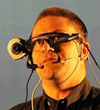
SUN Microsystems
Simon Ritter specialises in looking at emerging technologies including grid computing, RFID, wireless sensor networks, robotics and wearable computing. Simon has been in the IT business since 1984 and holds a Bachelor of Science degree in Physics from Brunel University in the U.K.Originally working in the area of UNIX development for AT&T UNIX System Labs and then Novell, Simon joined Sun in 1996 and started working with Java technology; he has spent time doing both Java development and consultancy.
Presentation: Java 6 update 10, Ease of Deployment and Java SE 7 
Java SE is on over 90% of desktops and Java ME is on over 90% of mobile phones. Java is also making a big dent in the consumer space such as set top boxes, Blu-Ray Disc players and so on. Although Java client technology is ubiquitous, consumer applications are not because development and deployment for consumers is still too hard.
The talk will explore the features that are being explored to create leaner and meaner JRE that eases deployment and installation. The features that are being looked into will ease start-up time, provide a quick launch and on-demand installation, among other things. The talk will explore the Java Kernel and other features that ease applet and application instantiation and deployment. We will also look at features that enable building richer client applications with Java SE 6 Update 10. The talk will also look into features of Java SE 7.
After attending this session attendees should be able to walk away with a good understanding of where the Java SE platform is headed and how this should ease their development and deployment concerns for consumers.
Presentation: JavaFX In Action 
This jam-packed talk will detail JavaFX from cover to cover. Come learn about this exciting new technology from Sun Microsystems for creating compelling rich internet applications on the Java platform. This session will cover:
* An introduction to the JavaFX Script language
* A tour of the core APIs including graphics, animations, and media
* Designer/Developer workflows using popular designer tools
* Developing and deploying to different target profiles (desktop, web, mobile)
* Futures and roadmap for JavaFX
Herbjörn Wilhelmsen
Objectware
.jpg)
Objectware
Herbjörn är systemarkitekt och senior konsult på Objectware. Herbjörn har många års erfarenhet av praktiskt arkitekturarbete i olika sammanhang. Herbjörn brinner för att systemutveckling skall förstås som en del av affärsutvecklingen.
Presentation: Vad bör en Business Architecture innehålla? 
För att kunna stödja en verksamhet behövs en bra förståelse för vilka funktioner verksamheten utför, vilken information som används, hur dessa delar hänger ihop och på vilket sätt detta tillför värde till verksamheten.
Men hur får man fram denna information, vilka leverabler bör tas fram och hur bör dessa leverabler användas? IASAs grupp "Affär till IT" söker svaret på dessa frågor genom att jämföra metoder som arbetar med Business Architecture.
Mikael Lundgren
Citerus

Citerus
Mikael Lundgren har arbetat sedan 1994 med produktutveckling som utvecklare, projektledare, Scrum Master och utvecklingschef i verksamheter som haft mjukvara som en viktig del av sin produkt.
Mikael blev Sveriges förste Certified Scrum Trainer 2006 och arbetar idag med att hjälpa företag att använda lättrörliga lednings- och utvecklingsprinciper i sin arbetsvardag.
Presentation: Den lättrörliga organisationen 
Lättrörlig produktutveckling har hittills i många fall varit en gräsrotsrörelse som tagit utvecklingssidan med storm, men lämnat ledningen frågande. För att få utväxling på ett lättrörligt arbetssätt krävs att man kan dra fördel av det förändrade utvecklingsflödet, utnyttja det ständiga förbättringsarbetet, och använda liknande arbetsformer i ledningsarbetet.
Över tiden förändras flera saker i verksamheter som anammar ett lättrörligt ramverk som Scrum - hur vi leder och belönar människor, och hur organisationen är utformad. I detta föredrag belyses bland annat:
* Hur pulsen startas i en lättrörlig verksamhet, och hur den används genom hela organisationen
* Hur ledningen kan utnyttja pulsen till sin fördel
* Lättrörlig planering och uppföljning
* Hur Scrum fungerar ihop med kunskapsbaserad (Lean) produktutveckling
* Hur funktionschefer och specialister passar in i det lättrörliga ramverket
* Exempel på karriärvägar och belöningsmodeller i en lättrörlig verksamhet
Christer Larsson
Makewave

Makewave
Christer Larsson, CEO and Co-founder Makewave AB. Christer Larsson has over 15 years of experience in business development and advanced systems design for high-tech companies with experience from the automotive, airline and telecom industries working for such companies as Volvo IT, Carmen Systems and Ericsson.
Christer has been involved in the development of the OSGi technology since 1998, taking part in the design of Ericsson's e-box concept which influenced the first releases of the OSGi specification to a large degree. He is currently the CEO of Makewave (formerly Gatespace Telematics) and the VP EMEA of the OSGi Alliance. Christer is also deeply involved in the open source OSGi project Knopflerfish.
M.Sc., Chalmers University of Technology 1991
Presentation: OSGi release 4, v4.2, vad är nytt, vad är ändrat? 
Nästa version av OSGi specifikationen kommer att släppas under 2009 som OSGi Release 4, version 4.2. Denna presentation ger in första
inblick i vad som är nytt och vad som är ändrat jämfört med tidigare versioner av specifikationen.
Gunnar Ekolin
Makewave

Makewave
Gunnar Ekolin is a Research and Development Engineer at Makewave AB, Sweden. Gunnar has been working with the OSGi specification and reference implementation since 1999 at former Gatespace AB. Gunnar is currently one of the lead developers and maintainers of the open source Knopflerfish implementation of the OSGi Service Platform, as well as Makewave's provisioning system Ubicore. Besides developing Knopflerfish, Gunnar is regularly giving courses on Java and OSGi technology on an international basis.
Presentation: Klassladdning i OSGi 
När man börjar använda OSGi så blir man ofta närmare bekant med ClassNotFoundException utan att man egentligen vill
det. Presentationen beskriver i detalj hur klassladdningen för en OSGi bundel går till. Den tar även upp problem som man kan råka på när man från en OSGi bundle använder andra java bibliotek som inte känner till OSGis speciella krav på klassladdning.
Presentation: The OSGi Framework Illuminated
The dynamic nature of the OSGi framework can present developers with the daunting task of navigating everything from a few to hundreds of bundles, and even more package and service relationships.
All of the major OSGi frameworks contains at least a text based console to view some of these relationships, but sometimes text is not enough.
This short talk will demonstrate the graphical Knopflerfish OSGi desktop, using it to view and control bundles and cast new light on the inner workings and design choices of some common setups, as the Eclipse IDE, the Spring framework, Apache Felix and Knopflerfish OSGi.